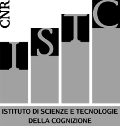Enthymemes are traditionally defined as arguments in which some elements are left unstated. It is an empirical fact that enthymemes are both enormously frequent and appropriately understood in everyday argumentation. Why is it so? We outline an answer that dispenses with the so called "principle of charity", which is the standard notion underlying most works on enthymemes. In contrast, we suggest that a different force drives enthymematic argumentation--namely, parsimony, i.e. the tendency to optimize resource consumption, in light of the agent's goals. On this view, the frequent use of enthymemes does not indicate sub-optimal performance of arguers, requiring appeals to charity for their redemption. On the contrary, it is seen as a highly adaptive argumentation strategy, given the need of everyday reasoners to optimize their cognitive resources. Considerations of parsimony also affect enthymeme reconstruction, i.e. the process by which the interpreter makes sense of the speaker's enthymemes. Far from being driven by any pro-social cooperative instinct, interpretative efforts are aimed at extracting valuable information at reasonable costs from available sources. Thus, there is a tension between parsimony and charity, insofar as the former is a non-social constraint for self-regulation of one's behaviour, whereas the latter implies a pro-social attitude. We will argue that some versions of charity are untenable for enthymeme interpretation, while others are compatible with the view defended here, but still require parsimony to expose the ultimate reasons upon which a presumption of fair treatment in enthymeme reconstruction is founded.
Enthymematic parsimony
Tipo Pubblicazione:
Articolo
Publisher:
Reidel, Dordrecht , Paesi Bassi
Source:
Synthese (Dordrecht) 178 (2011): 461–501. doi:10.1007/s11229-009-9652-3
info:cnr-pdr/source/autori:Paglieri, F., Woods, J./titolo:Enthymematic parsimony/doi:10.1007/s11229-009-9652-3/rivista:Synthese (Dordrecht)/anno:2011/pagina_da:461/pagina_a:501/intervallo_pagine:461–501/volume:178
Date:
2011
Resource Identifier:
http://www.cnr.it/prodotto/i/47227
https://dx.doi.org/10.1007/s11229-009-9652-3
info:doi:10.1007/s11229-009-9652-3
http://link.springer.com/article/10.1007/s11229-009-9652-3


